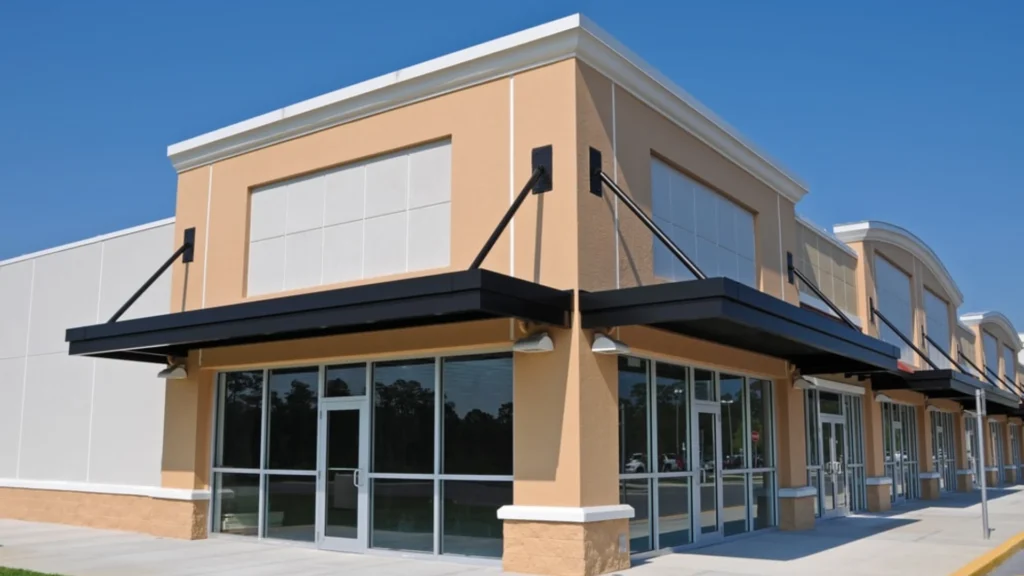When it comes to maintaining a warehouse, one of the most important tasks is keeping it in good condition, and that includes painting the warehouse floor. A newly painted warehouse can not only improve the look of the area but also ensure its safety, durability, and cleanliness. Warehouse floor painting is an important process whether you are renovating your existing warehouse or establishing a new one.
In this blog, we’ll walk you through a detailed step-by-step guide to warehouse painting. From preparing the concrete floor to choosing the right warehouse floor paint and applying it, this guide will ensure your warehouse is painted professionally and ready for use.
Why is Warehouse Painting Important?
It is worth knowing why painting your warehouse is such a serious endeavor before going deeper into the details on how to prepare a concrete floor to be painted. Although we might consider it a mere cosmetic upgrade, there are indeed a few major advantages to having your warehouse, in particular, floor, painted appropriately. This is why it is so necessary to paint floors in the warehouse:
Why Should You Paint Your Warehouse?
- Safety: Having a well-painted floor can serve to make the working atmosphere much safer since there will be better visibility and certain areas dedicated to particular activities. As an example, bright floor materials can be used to mark walkways, storage spaces and vehicle lanes to ensure that there are minimal accidents.
- Durability: The warehouse floor paint not only presents a more attractive appearance to the floor, but it also ensures that the concrete is not worn or damaged, spills or stains, and the paint is environmentally harmless. It can prolong the life of your concrete floor and save you some money in long term repairs.
Step-by-Step Guide to Painting Your Warehouse
Follow these detailed steps to ensure your warehouse floor painting is done correctly and efficiently.
1. Prepare the Concrete Floor
The first and most important step is preparing the concrete floor. Without proper preparation, the paint won’t adhere well and may peel off after a short time.

- Clean the Surface: Wash the concrete floor with concrete cleaner/degreaser. This will eliminate any dirt, oil, grease or any other contaminating substances that may stop the adherence of the paint. With a scrubbing brush access the corners and cracks of the floor.
- Remove Stains: Should there be any more stubborn stains or oil spots, they can be removed using a degreaser. There might be certain places that need an extra scrubbing to clear all the dirt.
- Etch the Concrete: In case of a smooth concrete floor, then it is a good idea to etch the concrete. This procedure lines the surface and makes it rougher enabling the paint to adhere better. Apply your etching solution, following the instructions and apply it on the floor. Allow it to rest in a like manner as the suggested time, and rub it down and run it under a lot of water.
- Dry the Floor: Clean and etch then make sure that the floor is dry before proceeding to the next step. This may require several hours or even a day depending on the weather in terms of humidity and temperature.
2. Choose the Right Paint
It is quite important that the right warehousing floor paint be selected, with the objective of the paint being long-lasting and durable. Floor paints are of different varieties, e.g., epoxy, polyurethane, and acrylic, whose advantages differ.
- Epoxy Paint: This is the most popular option for painting the floor of a warehouse. It is also long lasting, chemical-free and stain-free as well as giving a professional and glossy look. It suits well in high traffic places, and has strong bonding ability on concrete.
- Polyurethane Paint: Just like epoxy, but more penetrable to UV light, so that it is best used in locations that are exposed to sunlight. It is also very durable and has a smooth, glossy finish.
- Acrylic Paint: As opposed to epoxy or polyurethane, acrylic paint is easy to apply, fast to dry, and inexpensive. It is preferable in small spaces or low pedestrian traffic areas.
3. Apply Primer (If Needed)
There are cases where a floor in the warehouse would do well with a primer and then the paint will be applied. When the floor is new, very porous or there are numerous cracks it will be beneficial to apply a primer so that the paint may stick in place better and offer a smooth surface. Always read the label of the paint as there are those that have their own inbuilt primer and some that need to be painted on separately.
- Apply the primer on the floor with a roller. Begin on one side of the warehouse and head towards the exit so as not to step on the wet surface.
- The freshening of the primer should be done before applying the paint. The process of drying may take a long or a short time; therefore, it is important to adhere to the instructions by the manufacturer.
4. Paint the Floor
And the fun part now comes into place: painting! Take out the paint roller and paint brush to begin applying the warehouse floor paint of your choice. It is better to do it step-by-step, begin with one corner, and then proceed to the other side of the floor. It does not make you step on wet paint and fall.
- Apply the paint using long strokes in order to evenly apply the paint to cover all parts of the floor.
- Consider edges and corners, where a roller might not be the most appropriate than a brush.
- Use a second coat when required. Depending on the type of leftover surface, one paint might not be sufficient to paint the floor in one or two coats.
5. Let the Paint Dry
Once the paint is spread on, it is a good idea to allow the paint to dry and cure. Depending on the kind of paint applied, drying may be completed in a shorter period but generally it takes a period of 24 to 48 hours before the floor is completely dry.
- Avoid traffic: Do not use traffic during the drying process. These involve the foot traffic as well as vehicles where any kind of commotion may result in smudging or peeling of the paint.
- Cure Time: Although the paint may suitably be dry to the touch, and yet the paint may also take as long as one week to be fully cured and hardened. At this period, it is advisable to have the warehouse cleared and no heavy equipment or vehicle movement.
6. Maintain the Painted Floor
As soon as the paint has completely dried, it can be used again in the warehouse. Many maintenance routines are needed to take care of the floor painting of the warehouse.
- Regular Cleaning: Sweep and mop the floor regularly so that it remains clean and free of dust or debris that can wear off the paint.
- Periodic Touch-Ups: With time, the high traffic places may require a touch-up. Have a supply of extra paint to make minor repairs.

Tips for a Successful Warehouse Painting Project
The following are some of the additional suggestions to have a successful floor painting project in your warehouse:
- Plan for downtime: Better to make sure the warehouse is empty or have arrangements to continue with the operations elsewhere as the paint dries.
- Ventilation: Ensure that the warehouse is well ventilated in order to avoid breathing of paint fumes. And open windows and use fans when necessary.
- Choose the right time: Painting should not be done in extreme temperatures and in high humidity conditions because this may influence the time of drying and the finish.
- Use high-quality paint: Investing in high-quality warehouse floor paint will ensure durability and a professional finish.
Conclusion
So painting your warehouse floor can be summarized in easy-to-follow steps. Look professional and make your work last longer to enhance safety, durability and hygiene. Whether you do it yourself or hire a warehouse painting contractor, the key steps of this procedure is proper preparation, selection of products and attention to detail are the keys to success.
Get more information about warehouse floor painting and professional assistance on your next project. Visit Knapp Painting, the leading warehouse painting provider.
FAQs
Clean the surface, remove stains if necessary, and ensure the floor is completely dry before applying paint.
Yes, with the right tools and preparation, it’s possible to paint your warehouse floor yourself. Just make sure to follow the steps carefully.
It may take 2 to 5 days, taking into account warehouse size and timing to completely dry and breathe.
It depends on the amount of foot and vehicle traffic, but generally, repainting every 2-3 years keeps the floor in good condition.
Epoxy or polyurethane paints are ideal for warehouse floors due to their durability and resistance to wear and tear.













